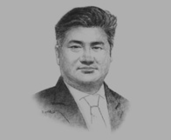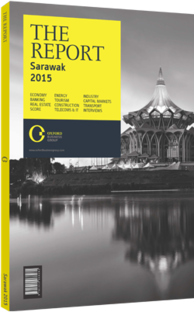OBG talks to Sudarnoto Osman, CEO, SACOFA

Interview: Sudarnoto Osman
What steps are being taken to expand the state’s mobile telecoms network to all rural areas within the timeframe allocated by Malaysia’s Vision 2020?
SUDARNOTO OSMAN: We must first differentiate between the speeds and services being offered, and whether the technology is 2G or 3G. Urban areas in Sarawak are entirely covered by 2G technology, and around 80% have 3G coverage too. Rural areas are also covered to a high degree, with 90% of rural towns and villages in the state already supported by 2G technology. Yet this represents the totality of coverage rather than any single operator’s network. The nation’s three major mobile operators, DiGi, Celcom and Maxis, each offer about 80-85% coverage in rural areas, so that total figure of 90% is not necessarily applicable to the customer, as some areas may have a given operator present while others do not. To help tackle this there is cooperation within the industry regarding the Malaysian Communications and Multimedia Commission’s T3 extension project. The focus of the scheme is to build towers and provide 2G and 3G services to rural areas based on Single RAN technology, meaning all operators will be allowed to use the same equipment for the provision of services. This will result in a truer picture of how much coverage is being provided to rural areas, with 149 towers under the T3 Universal Service Provision Expansion programme to be ready in 2015, plus the expected 85 that are still under tender.
How much demand is there in Sarawak for 4G long term evolution (LTE) services? What challenges do network providers face during the LTE rollout?
SUDARNOTO: LTE coverage requires smaller, more intensive towers and structures than those used for 2G and 3G. The higher the frequency, the smaller the coverage area will be, so a large volume of smaller structures are required for the provision of LTE here. A key challenge is the need for increased self-regulation. Whereas previously each new structure being built fell under the purview of government regulation, the sheer number of towers needed for LTE would impact the roll-out due to approval delays. The government has already approved self-regulation for structures measuring below 15 metres, which is helping to expedite the rollout, but there is further scope for liberalisation.
The key to LTE growth is fiberisation, and SACOFA has been thoroughly fiberising the towers we build, currently numbering about 500 of the total 800 towers, inclusive of those in rural areas. LTE ultimately means speed and big-data bandwidth, and through fiberisation it is no longer an issue for telecoms operators to deploy this technology. With that in mind, we are aggressively implementing fiberisation for all of the operators we work with toward achieving a successful LTE rollout.
To what extent is the presence of new investors a driver for telecoms network growth? How is the network being enhanced to meet this new demand?
SUDARNOTO: The more investors that enter the market, the more areas will be opened up for development. Telecoms is playing and will play a key role in servicing the new industrial areas being developed in Sarawak, and as an industry player we are excited by the network growth prospects brought on by demand from incoming investors. The demand for quality of service and the requirement for bandwidth are very high in these areas, and we must ensure that supply meets demand.
Most investors nowadays need to communicate with partners from other parts of the world easily, so the demand we are experiencing for this level of provision is high. SACOFA has been heavily involved in the development of the telecoms infrastructure of the Sarawak Corridor of Renewable Energy (SCORE). Our fibre network already extends to SCORE, we have been building structures there as required by the Regional Corridor Development Authority and the various telecoms operators, and are providing fibre-to-the-office services directly to large investors. Increasing investment in any of Sarawak’s industries will remain conducive to positive network growth for the foreseeable future.
You have reached the limit of premium articles you can view for free.
Choose from the options below to purchase print or digital editions of our Reports. You can also purchase a website subscription giving you unlimited access to all of our Reports online for 12 months.
If you have already purchased this Report or have a website subscription, please login to continue.

